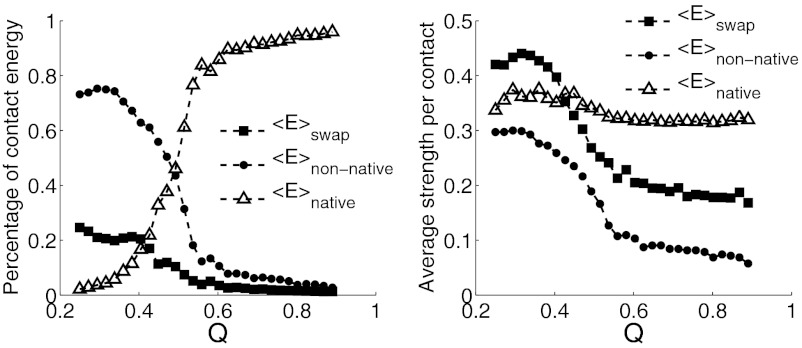Fig. 8.
For all three different types of contacts, their contributions to the total binding energy, and their average strength are plotted against Q of the Lambda repressor complex. Native contacts, swapped contacts, and nonnative contacts excluding swapped contacts are in triangle, square, and circle symbols, respectively. (Left) As the complex approaches the native state, the major contributor to the binding energy switches from nonnative contacts to native contacts. This change of contribution is steep around Q = 0.5, near the transition state region. Total energy of swapped contacts is about 20% of the total binding energy at the low Q region. (Right) Swapped contacts are on average stronger than other nonnative contacts throughout the whole Q region. As Q increases, the average strengths of both swapped and nonnative contacts decrease, whereas the strength of the native contacts is more or less constant. At the low Q region, where the two monomers are in initial encountering, the average strength of the swapped contacts is even larger than the native contacts.

